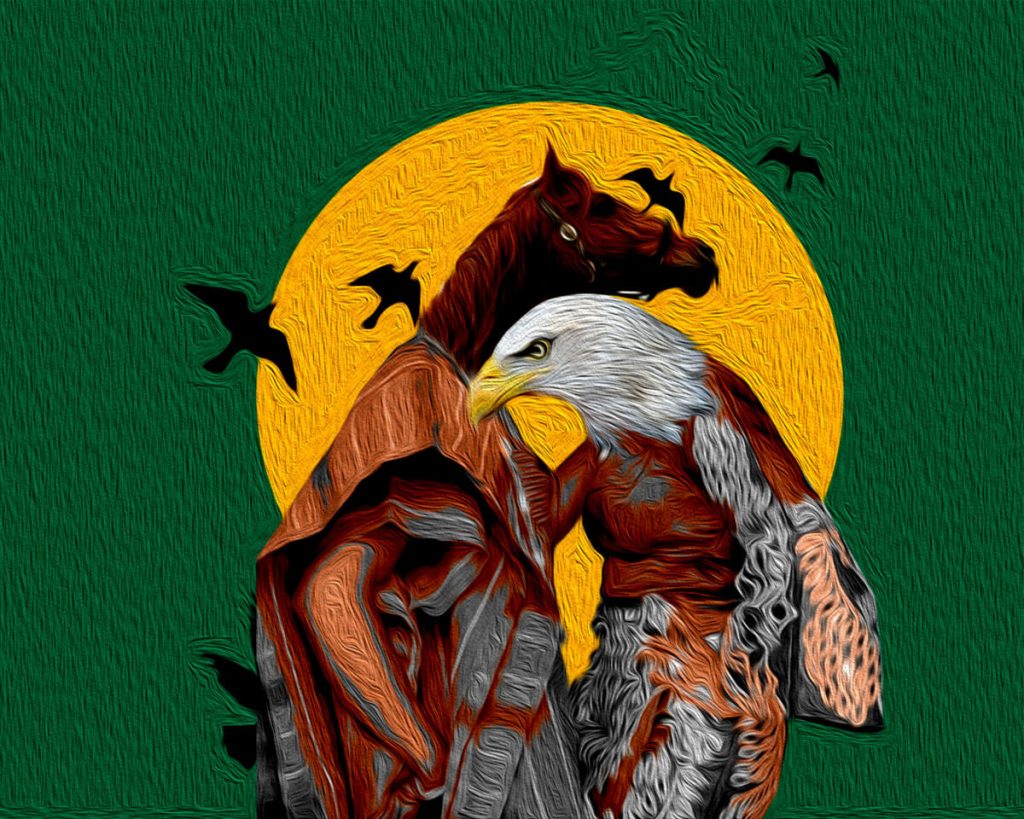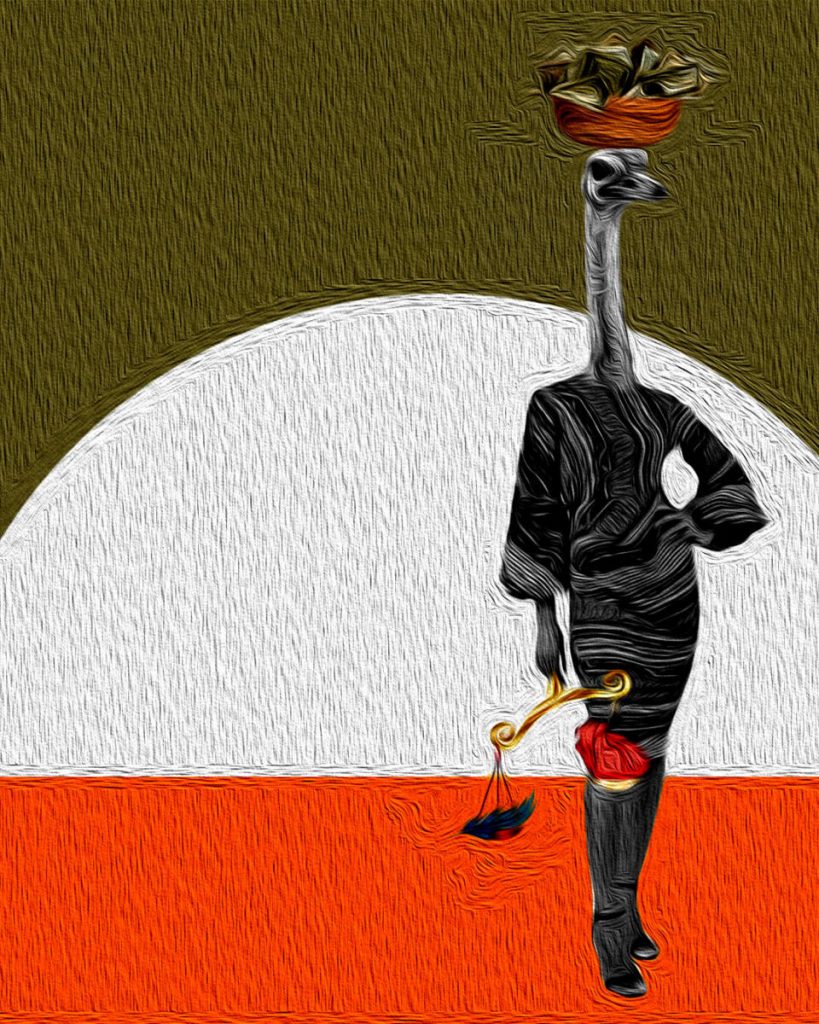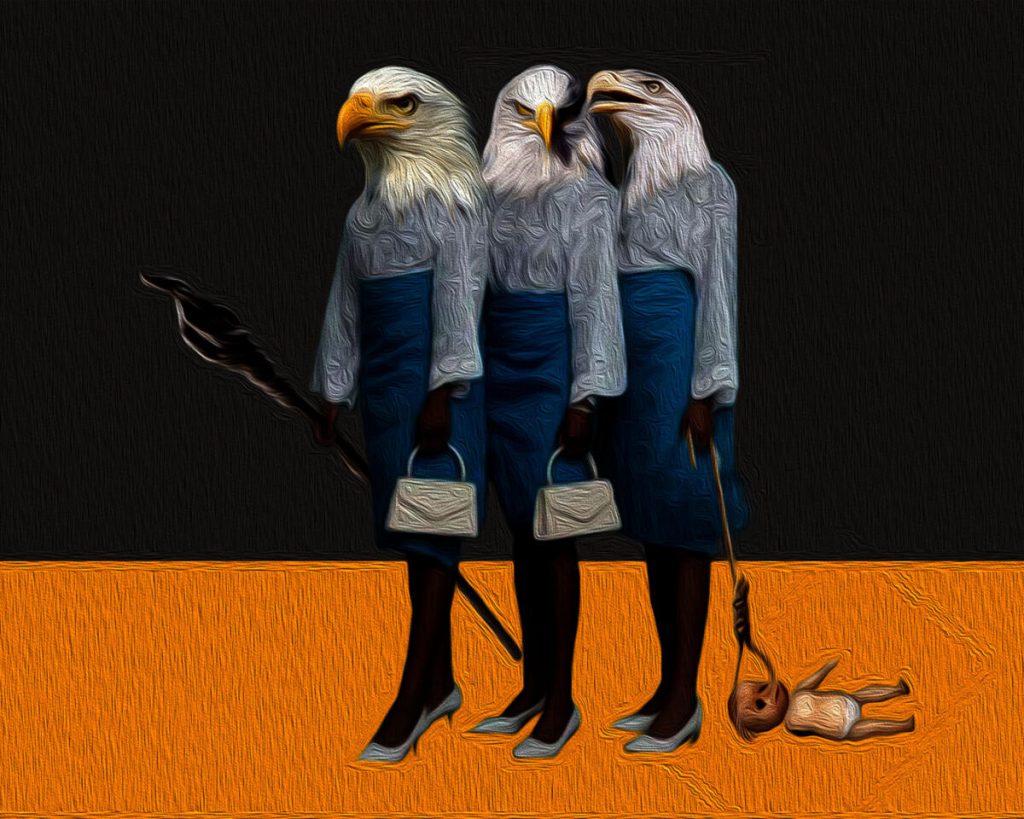
They say dreams are doors into our subconscious, similar to how our eyes serve as windows to the soul. We are not our minds, they say; and our dreams manage to capture the realities we run from, or the ideas yet to be formed. This places the concept of dreams in an interesting spot, they might either be lacking in meaning or, have the tendency to be profound, and revealing. Digital painter, Adedeji Akinkunmi in his ‘A Strange World’ project offers interpretation on the age-long question of what one sees when the subconscious is interrogated.

‘A Strange World’, fully designed by Adedeji, is a cutting, lurid, and bizarre encounter with the things we think we have grown familiar with. An unsettling experiment of surrealism, it pits ideas against one another to stir emotion. These range from despair, to comfort, royalty, fear. Adedeji’s works prefer to unravel when viewed. It rewards second looks for those looking to find new stories in them. They are non-linear, and strange; it is all a dream. Adedeji attests to this in conversation with Flux Review.
The artist, who is Nigerian grounds the painting with a setting through clothing. The attires maintain a certain traditional charm; it is African, it is yoruba. Subjects within the works wear different yoruba clothing styles. The male figures wear Agbada, buba, shoro. The women wear Aso-oke, which represents womanhood. One of the works, named ‘The Trade’ has an ostrich wearing ‘Oleku’; a top, and short skirt synonymous to youth. The Ostritch holds a scale; and on her head lies a basket of money. The Ostritch’s countenance is impatient, she waits. Another image, simply titled ‘Portrait’ shows a goat wearing iro and buba, she completes her look with an irukere (horsetail). This shows power, and influence. There is strength in this painting.



The texture within the artwork swirls, as if it were a delicate subject in stasis, preserved in water through time. This lends the piece a certain dreamy, or nightmarish aesthetic. It melts away the more it is inspected.
Adedeji buries metaphors within his works. A common question raised by observers would be “Why the animal heads?” This motif is almost reminiscent of old Egyptian lore. As Anubis had a Jackal for head; his brother Wepwawet, a wolf. Horus has a bird. Parallels exist between these and ‘A Strange World.’ The ancient Egyptians drew heiroglyphs on their walls for commerce, then began to document their history; vital parts of the Egyptian culture and religion. However, the artists chose to interpret the members of their religious pantheons with some leeway as regards creative expression. They use animals that represent the dominant character for these gods to stand in for their actual heads. As the coffin text in the tomb says, ‘Only the dead can know the true forms of the gods.’ So they opted for what is regarded, a Therianthropic approach in representation— replacing human heads with animal parts.
Various animal heads surface in this project. A stallion represents the integrity that lies within masculinity. The Woodpecker tells of motherhood. Eagles embody most of the women in the works. Adedeji uses the Giraffe to represent beauty, but he places a gun in its hand, and a cat beside it. One of them has a Cockerel breastfeeding. It is a lot of chaos, and confusion. The more the artworks are dissected, the farther its meanings elude. Like a fresh dream, clearing when the memory reaches out to fetch it.



He brings in different scenarios from the Nigerian experience, and immerses them in a surrealist environment. One of the artworks has three ladies, wearing ‘Aso Oke’, a staple Yoruba attire for party. They walk along a pitchblack backdrop. The women have bald Eagles for heads. Two of them clutch handbags, and one holds a noose which drags a baby by the neck. Almost reminiscent of the three witches trope, popularised by Shakespeare’s Macbeth, and sustained in Nigerian lore. The one in the middle looks back at you. It unsettles.



The painter’s works have been exhibited in various platforms, one of which is German digital art platform, Kunstmatrix— who loved it so much they decided to feature the works on their website frontpage. It really isn’t far-fetched why these works would resonate so much with people born outside of Nigerian, or even the Yoruba culture. They are paintings that evoke strong feelings when unravelled. Sometimes, we feel conflict within the works; but then, conflict is the way of man. And according to Adedeji, our subconscious processes it so.
About the writer: Oyedele Alokan is a writer, strategist and editor. He enjoys and reviews art, music, and culture. Follow him on social media, @deelokz_, drinks are on him.


NO COMMENTS